Physical Address
304 North Cardinal St.
Dorchester Center, MA 02124
Physical Address
304 North Cardinal St.
Dorchester Center, MA 02124
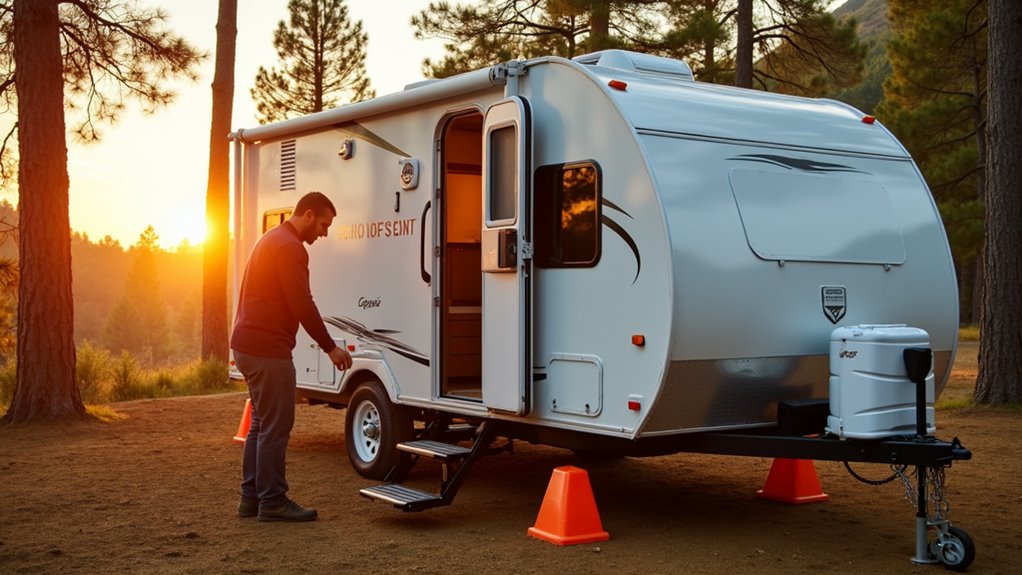
Get insider secrets for renting the perfect travel trailer, from avoiding hidden fees to choosing the right size for your adventure.
Have you ever dreamed of hitting the open road with a home-on-wheels, only to feel overwhelmed by the rental process? You’re not alone. Renting a travel trailer doesn’t have to be complicated, but it does require careful planning and knowledge to avoid common pitfalls. Whether you’re a first-time renter or looking to upgrade your travel game, these expert tips will help you navigate the journey from reservation to return with confidence.
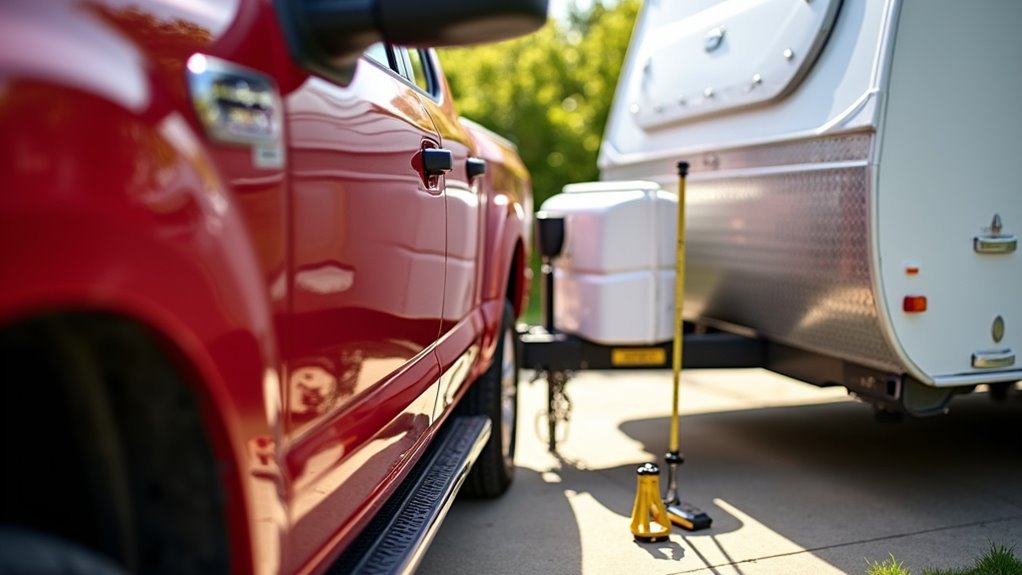
Three critical factors determine if your vehicle can safely tow a travel trailer: the manufacturer’s towing capacity, gross combined weight rating (GCWR), and proper tongue weight distribution.
Check your owner’s manual for the official towing capacity – aftermarket modifications don’t increase this limit.
You’ll find the GCWR on a metal plate in your driver’s side door jamb, which shows the maximum combined weight of your vehicle, trailer, passengers, and cargo.
For safety, keep your trailer weight at 80% or less of your vehicle’s maximum towing capacity.
Ensure your trailer’s tongue weight is 10-15% of its gross weight for stability. Exceeding the recommended tongue weight percentage can severely impact your vehicle’s handling and braking performance.
Don’t forget to account for cargo weight in your calculations: water, propane, gear, and passengers all count toward your total load limits.
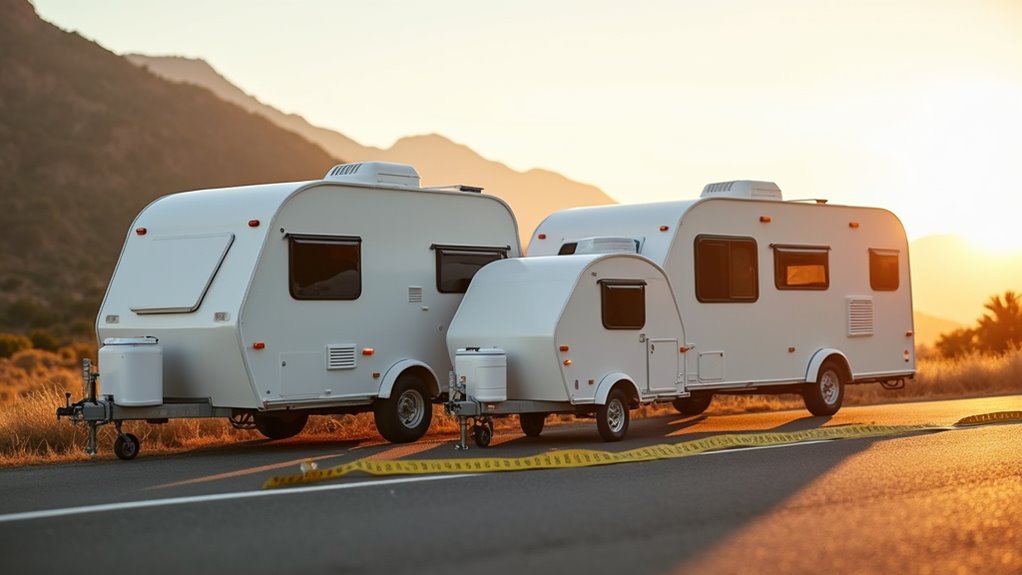
Selecting the right travel trailer length requires balancing your comfort needs with practical limitations. Travel trailers range from 8 to over 40 feet, but most renters find their sweet spot between 20-28 feet, offering enough space while remaining manageable to tow. Floor plans should include well-thought-out layouts to maximize comfort and functionality during your trips. Unlike traditional RVs, travel trailers offer more flexibility when setting up camp since you can unhitch and use your vehicle independently.
When choosing a travel trailer, aim for 20-28 feet—the perfect balance between livable space and practical towing considerations.
Consider your destination’s restrictions, as many campgrounds limit trailer length to 30-35 feet.
You’ll also need to factor in your vehicle’s towing capacity and your comfort level with hauling larger units.
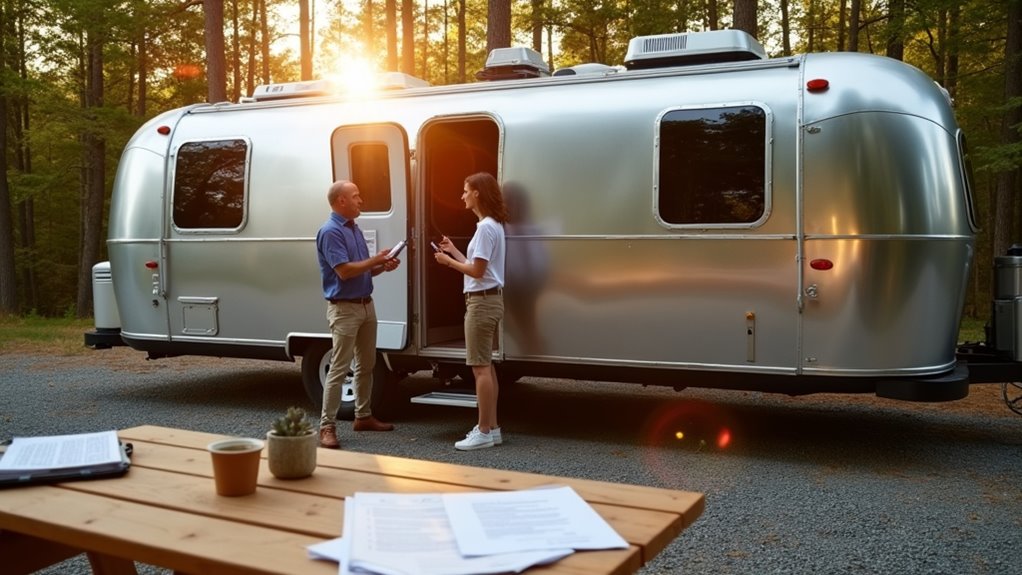
Once you’ve chosen the right-sized trailer, protecting your rental investment becomes your next priority.
You’ll need to understand the essential coverage types: liability protection for injuries or damage to others, collision coverage for accidents, and extensive coverage for theft or natural disasters.
Most rental companies offer tiered insurance packages ranging from $15-30 per day, with deductibles between $1,000-$5,000.
You’ll want to carefully review what’s not covered, including interior damage, personal belongings, and mechanical issues. Your homeowners insurance policy generally won’t provide coverage for any damage to the rental RV.
Standard policies typically cover travel within the U.S. and Canada but may exclude Mexico.
Don’t count on your personal auto insurance – you’ll need to purchase coverage through the rental company.
Make sure you complete all required ID and safety verifications before finalizing your insurance selection.

Safety features demand thorough inspection before hitting the road with your rental trailer.
Proper safety inspection is crucial for rental trailers – it’s your first line of defense against roadway mishaps.
You’ll need to verify both internal and external safety components to guarantee a worry-free journey.
Don’t forget to verify that all connections are secure and properly rated for your trailer’s weight.
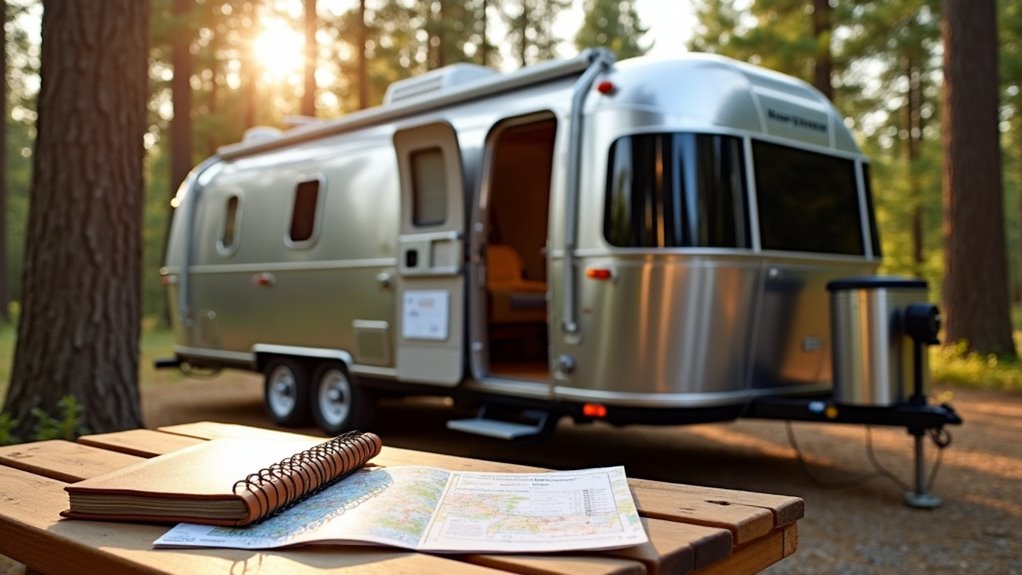
With your travel trailer’s safety features confirmed, it’s time to secure your perfect camping spot. Most campgrounds open their reservations 6 months to a year ahead, so you’ll need to plan early, especially for popular destinations like Yosemite where spots fill within minutes.
Use Recreation.gov for national parks or check individual state park websites for their booking systems. You’ll need to verify that your chosen campsite can accommodate your trailer’s dimensions and required hookups. Experienced campers often use popular finder apps like AllStays and Campendium to locate and compare available sites.
When booking, check the site’s specific length limits, available utilities, and accessibility. Don’t forget to save your confirmation numbers and review check-in procedures. A family RV adventure requires careful preparation to ensure everyone’s comfort and enjoyment.
Consider selecting campgrounds with flexible cancellation policies in case your plans change. If you’re uncertain about site details, call the campground directly to get accurate information about your specific needs.
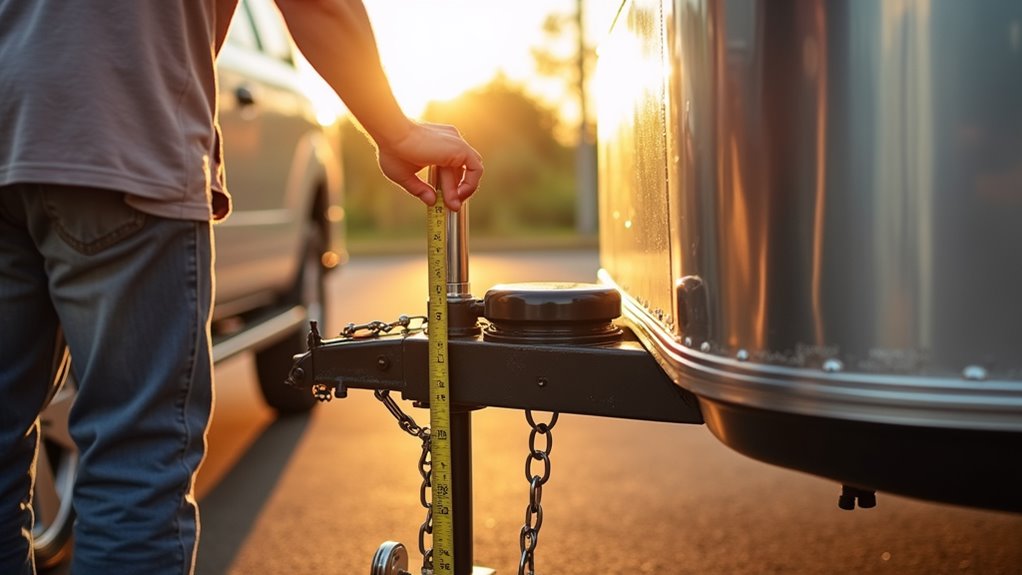
Mastering five essential towing techniques will help you safely transport your travel trailer to any destination.
You’ll need to start with proper weight distribution and hitch setup to prevent swaying. Then, focus on maintaining steady speeds between 60-65 mph while keeping extra distance between you and other vehicles. Having the right towing accessories is crucial for a safe and successful trip. Proper tongue weight distribution helps maintain trailer stability during travel.
Remember to take time practicing these techniques in an empty parking lot before hitting the open road.

Planning a travel trailer rental budget requires accounting for four major expense categories: base rental fees, essential services, insurance coverage, and unexpected costs.
Smart travel trailer budgeting starts with understanding the four key costs: rental, services, insurance, and surprise expenses.
For your base rental, you’ll spend $125-200 nightly for newer travel trailers or $50-125 for older models. Services like RV delivery to your home or campsite are available through many rental platforms. Don’t forget to add $20-60 per night for campsite fees and factor in fuel costs based on your trip distance.
Insurance typically runs $10-30 daily, and you’ll need to budget for waste disposal at $5-15 per dump.
Set aside funds for potential hidden fees like cleaning charges ($50-150), security deposits ($200-500), and convenience item rentals ($10-30).
You can reduce costs by booking off-season for 20-30% savings, bringing your own supplies, and splitting expenses with travel companions.
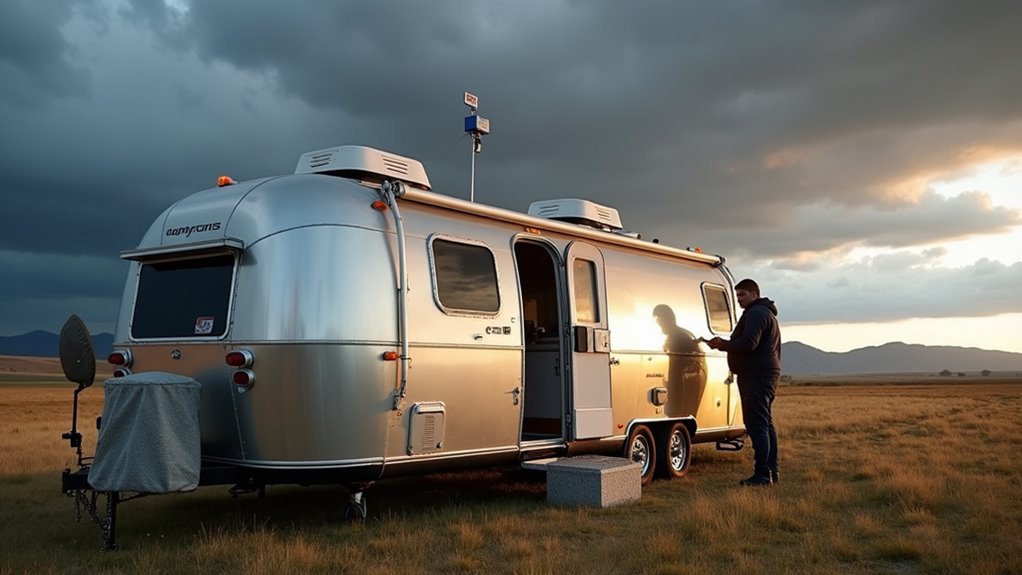
Successful travel trailer adventures depend heavily on understanding and preparing for weather conditions throughout your journey.
You’ll need to monitor forecasts regularly and guarantee your rental is properly equipped for the season you’re traveling in. Check weather apps daily and plan routes that avoid severe conditions when possible. Following alerts from the National Hurricane Center and local news sources is essential during storm season. When traveling in winter, ensure your RV has snow-rated tires for optimal traction and safety.
Don’t forget to communicate with campground staff about weather updates and maintain working emergency equipment throughout your trip.
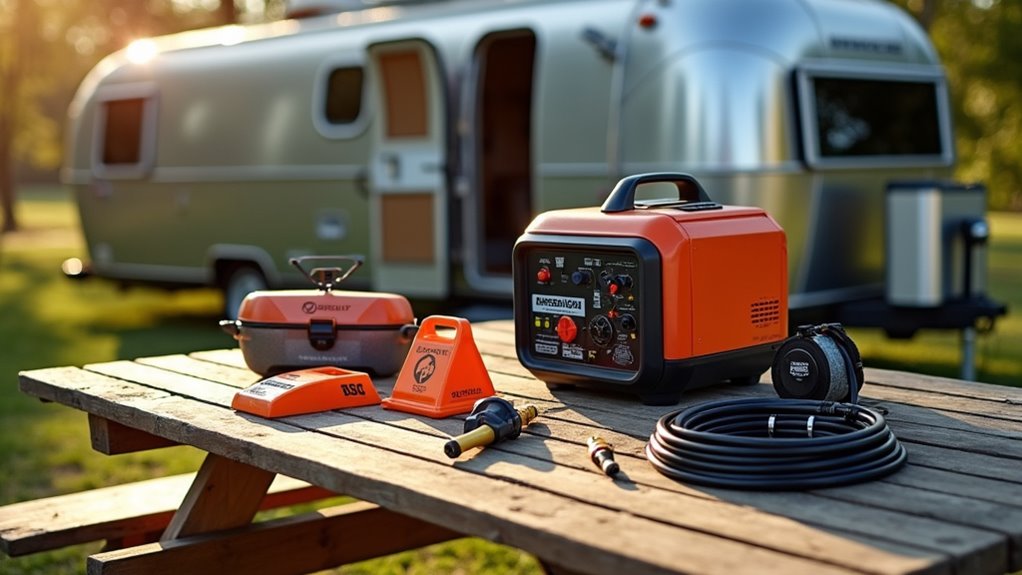
When starting on a travel trailer adventure, you’ll need to pack essential equipment and supplies that guarantee both safety and comfort throughout your journey.
Pack basic hand tools, including wrenches, pliers, and screwdrivers, along with duct tape for quick repairs. Don’t forget vital safety items like a first aid kit, fire extinguisher, and emergency roadside equipment. Having a reliable weather radio can help you stay informed about changing conditions and potential hazards.
Essential tools and safety equipment are your lifeline on the road – from basic wrenches to emergency gear, never leave unprepared.
For daily living, you’ll want cooking utensils, food storage containers, and cleaning supplies. Include camping chairs and tables for outdoor comfort. A portable grill makes meal preparation more enjoyable, while water bottles keep you hydrated. A comprehensive camping checklist ensures you don’t forget any crucial items for your trip.
Remember to bring specialized RV items like a water pressure regulator, freshwater hose, and toilet chemicals. Pack extra blankets and sleeping bags for unexpected temperature changes, and always carry flashlights with spare batteries.
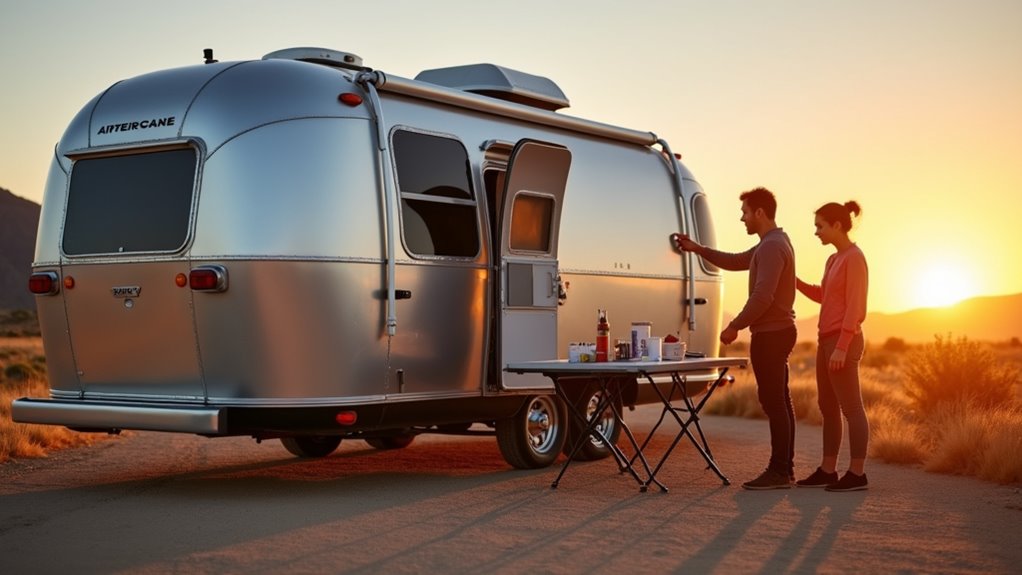
Setting up and tearing down your travel trailer efficiently requires a systematic approach that can save you time and frustration at the campsite.
You’ll need to master these essential steps to guarantee a safe and comfortable experience during your rental period.
You’ll want to identify any obstacles and plan your setup configuration in advance. Having a downloadable checklist ensures you don’t miss any critical setup steps.
Don’t forget to test all systems once connected. For one-way rentals, be sure to familiarize yourself with local campground utilities as they may differ across regions.
When it’s time to leave, follow a methodical teardown process: disconnect utilities, secure all loose items, and perform a thorough pre-departure inspection of your trailer’s systems.

The fine print in your travel trailer rental agreement can greatly impact your experience and financial obligations. Pay close attention to the identification requirements – you’ll need to be at least 25 years old and provide a valid driver’s license that matches your payment method.
Understand your financial responsibilities before signing. You’ll need to pay an initial deposit, and the full balance is typically due 30 days before your rental begins. A security deposit of $500 or more protects against damages. The walkthrough process at pickup takes 45-60 minutes to complete. Many companies offer long-term discounts for extended stays in their RVs.
If you damage the trailer, you’re responsible for repairs, and you’ll pay 150% of the regular rate during the restoration period.
Don’t overlook cancellation policies, pet restrictions, or smoking rules. Daily inspections are mandatory, and you must report any issues immediately to avoid additional charges.
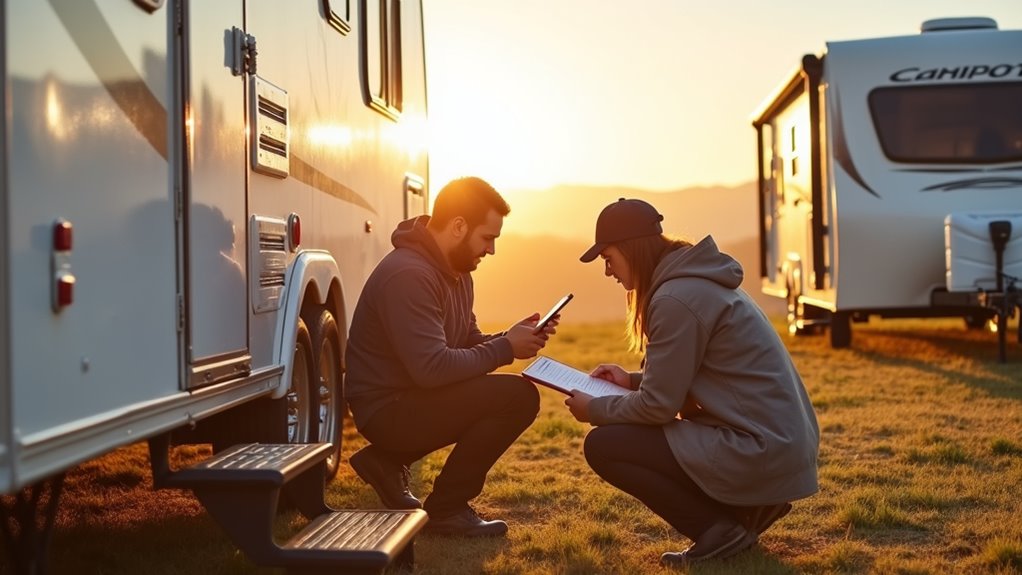
Proper pre and post-rental inspections can protect both you and the rental company from disputes while guaranteeing a safe, enjoyable trip. Before hitting the road, conduct thorough checks of the trailer’s systems and document its condition with photos and videos. Using downloadable templates can help ensure you don’t miss any critical inspection points. Following standard RV checklists will make the rental process smoother and help avoid common first-timer mistakes.
Thorough rental inspections and documentation protect all parties while ensuring your trip starts and ends smoothly.
After your trip, complete a detailed post-rental inspection, checking for new damage, cleaning thoroughly, and confirming all systems are working.
Take photos again and verify all paperwork is properly signed.
Don’t let the prospect of renting a travel trailer throw you for a loop. When you’ve done your homework on towing capacity, insurance, and safety checks, you’re halfway there. Take time to master setup procedures, document everything, and keep detailed records of your inspection findings. With proper planning and attention to detail, you’ll be ready to hit the road for your next outdoor adventure.